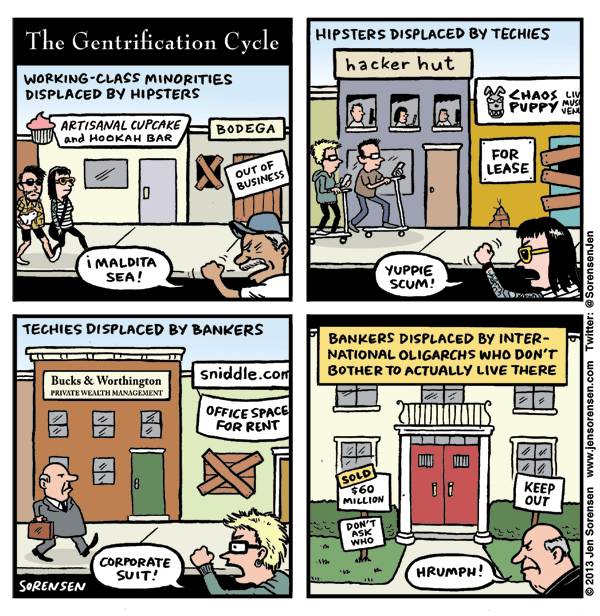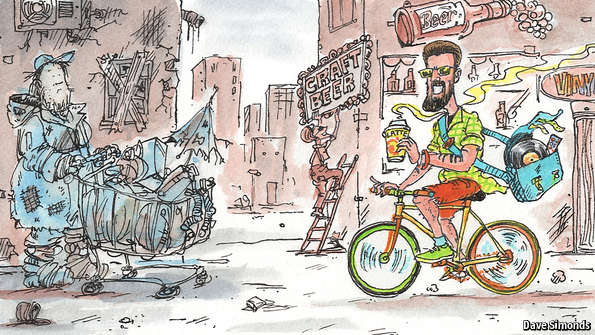Gentrification does not always stop at the first level, which is when “hipsters” or middle-class people replace the working-class minorities. It can happen several times to the same area, only stopping when the uber-rich take over the area and it becomes so expensive that no one could afford to live there at all. The first cartoon I found shows this cycle and how at different points, the ones who moved in and forced another class out are kicked out themselves.
Supporters of gentrification claim that it leads to an improved and better-quality neighborhood. Better parks and coffee shops, more police patrolling, cleaner streets–these are always mentioned by advocates of the process. However, the part where minorities and working-class citizens are forced out because of the increasing prices is edited out of their response. My second cartoon shows the negative effect that gentrification has on the original residents. While not all those who get kicked out of their homes are homeless right after, a lot of those who are displaced are in a bad situation where they have to find a cheaper place to live, but moving is expensive.
As Newman, Kathe and Wiley put it in their research paper, the original residents are “thrown into an ever more competitive housing market shaped by increasingly difficult trade-offs between affordability, overcrowding and commuting accessibility to jobs and services” (51). They are in an overall bad situation, and looking at gentrification through a positive light does little to help them. We must look deeper and figure out solutions instead of accepting gentrification as an inevitable process in a neighborhood, especially when it just begins and the residents start to protest.



